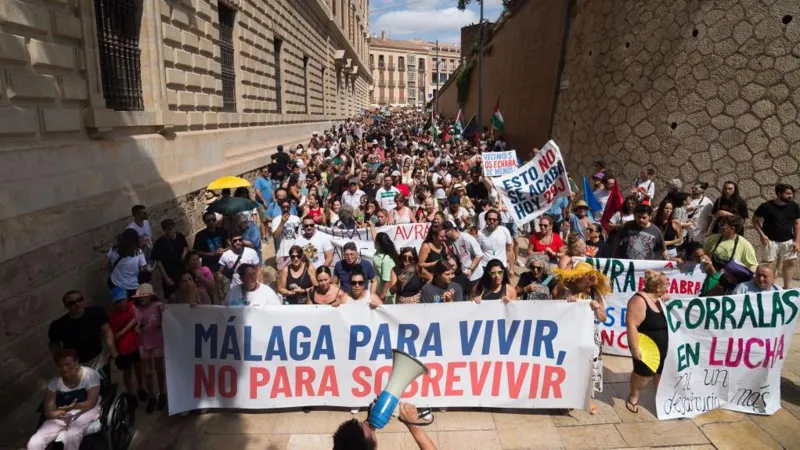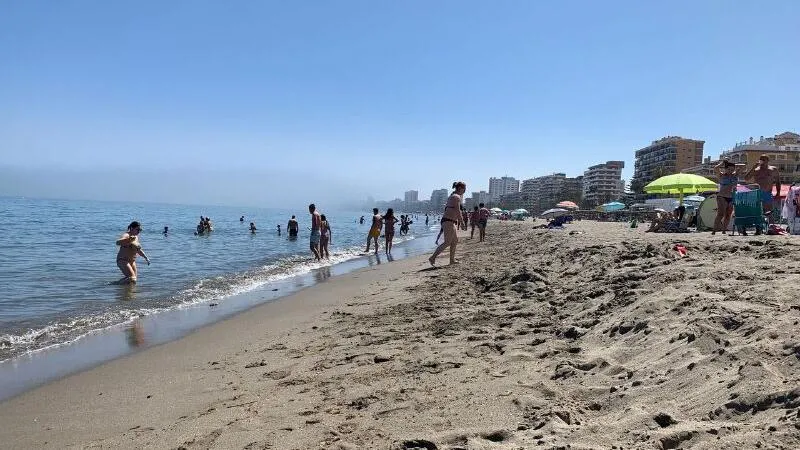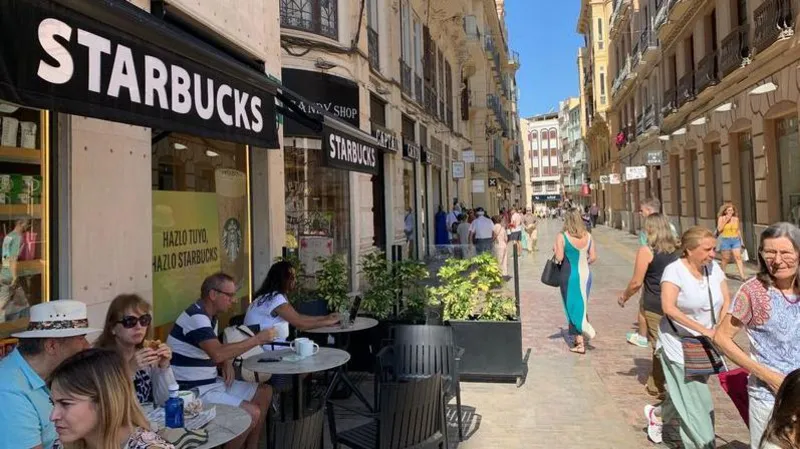Malaga’s Plaza de la Merced, bathed in the gentle morning sunlight, is a picturesque sight. Jacaranda trees in full bloom provide a canopy of vibrant purple, while the Obelisk monument in the centre of the square bears silent witness to history. To the side of the square, Pablo Picasso’s birthplace adds a cultural touchstone to the scene. Yet, beneath this calm exterior lurks a growing uneasiness.
Kike España, an urban planner and activist with the Malaga Tenants Union, surveys the square with a furrowed brow. He is not oblivious to the growing hordes of tourists visiting the city. For España, the influx of visitors is more than a logistical challenge; it is a profound anxiety that speaks to the very essence of Malaga.

“The situation is so saturated that Malaga has really reached a point where people feel the city is collapsing,” he explains. His words carry the weight of growing desperation. “It’s the same feeling you get when you enter a theme park,” he says. “There’s a rush of people who are consuming the city and not really inhabiting it.”
Spain’s restlessness is emblematic of a broader discontent that has spread across Spain’s major tourist destinations. The growing wave of tourism, while economically beneficial, is beginning to destroy the basic fabric of local life. This conflict between economic benefits and quality of life is becoming a focal point of civic debate and protest.

In late June, thousands of Malaga residents took to the streets to protest the adverse effects of tourism. The demonstration highlighted a growing sense of disenfranchisement among locals who feel cornered by the booming tourism industry. Issues such as rising housing costs, gentrification and heavy crowds have fueled this discontent.
Malaga is not alone in its struggle. Over the summer, protests have occurred in other Spanish cities and regions, including Barcelona, Alicante and the Canary and Balearic Islands. Activists in Tenerife staged a three-week hunger strike against the construction of a new tourist megaproject. In Barcelona, protesters targeted foreign visitors with water pistols, and waved banners bearing slogans such as “Tourism kills the city” and “Tourists go home”.

Spain has long been a magnet for international visitors, with its picturesque coastline, historic cities and vibrant culture attracting millions each year. The country’s tourism industry, which represents around 13% of the national GDP, has bounced back strongly from the Covid-19 pandemic. In 2023, Spain will welcome 85 million foreign tourists, and is expected to surpass 90 million in the current year. This puts Spain behind France, the world’s leading tourist destination.
José Luis Zoreda, president of tourism industry association Exceltur, emphasises the economic benefits tourism brings. He points out that the industry is responsible for around €200 billion in direct and indirect economic activity this year. Furthermore, tourism has played a key role in Spain’s economic recovery, contributing 80% of the country’s GDP growth in 2023.
While the economic benefits are undeniable, the increase in tourist numbers has led to a point where the negative impacts are becoming more evident. “Tourism used to be seen as a positive economic activity that is a big part of our GDP, but the numbers have become so large in terms of international arrivals that we are now seeing negative impacts, especially in cities,” says Paco Femenia-Serra, lecturer in tourism and geography at the Complutense University of Madrid.

The elements that make cities attractive to tourists – their historic charm, lively streets and unique character – are diminishing due to the sheer number of visitors. Locals are increasingly facing a lack of recognition in their neighbourhoods, as the influx of tourists drives up prices and sometimes transforms familiar neighbourhoods into tourist-centric areas. Small businesses are being pushed out in favour of franchise restaurants, bars and shops that cater to transient visitors rather than the community.
The most pressing issue, however, is the impact on housing. In Malaga, a significant portion of residential properties have been converted into short-term rentals aimed at tourists. A recent study by El País found that a quarter of all apartments around the Plaza de la Merced are rented out to tourists. This shift has exacerbated the housing shortage for locals, pushing rental prices to unaffordable levels.
With the average salary in Andalusia hovering around €1,600 per month, it is becoming increasingly difficult to find an apartment for less than €1,200-1,300. This disparity has led to a situation where locals are being forced out of their own neighbourhoods. Spain’s Housing Minister Isabel Rodriguez underlined the seriousness of the situation, saying: “If the people of Malaga have no place to live, who will provide services for tourists?”
